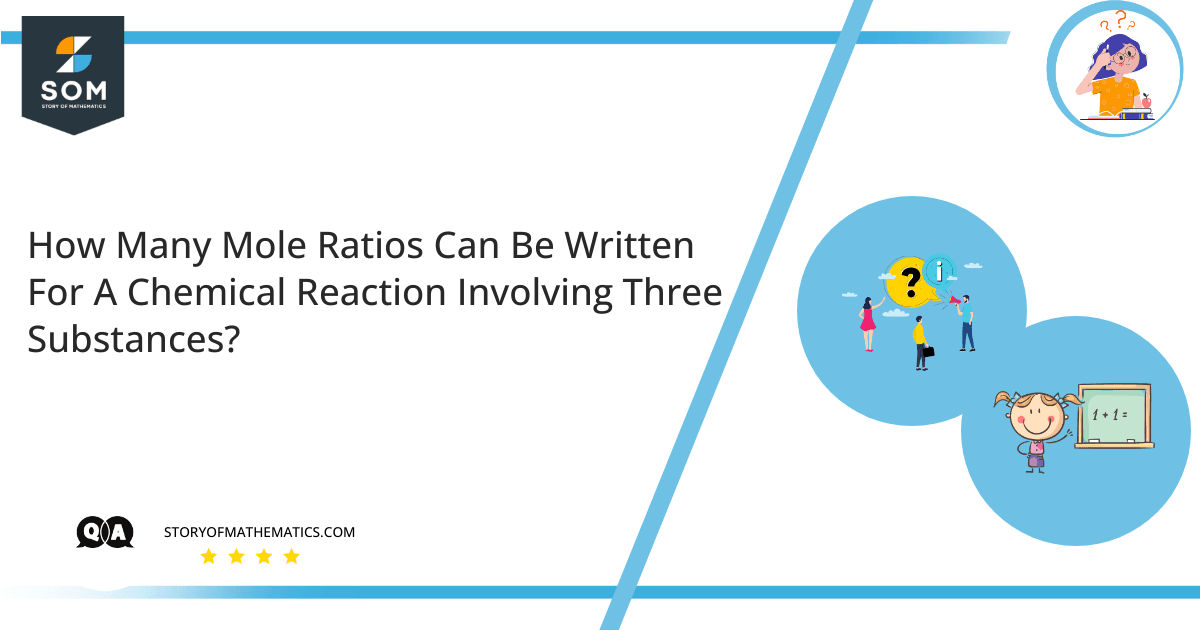
This problem aims to find the mole ratio of a chemical reaction involving three chemical substances.
To better understand the problem, you should know about the mole, mole weight, and mole ratios in stoichiometric reactions. A stoichiometric chemical reaction is a reaction in which the combined quantities of the reactants and products are in such a manner that all of the reactants are devoured and not a single mole remains after the fulfillment of the chemical reaction. The study of stoichiometry is valuable for estimating chemical reactions such as those that appear in decay processes.
Mole ratio is used to analyze the conversion of compounds in a chemical reaction, which is derived from the coefficients that the compounds hold in a balanced chemical equation. Thus, we can say that the mole ratio is used to transform quantities of compounds in a balanced chemical reaction.
Coefficients of either reactants or products, in a chemical equation, can be termed as the number of moles of that particular compound.
For example, this reaction: $ N_2 + 3H_2$ $ –> $ $2NH_3$ can be interpreted as:
$1$ mol of nitrogen $+$ $3$ mols of hydrogen yield $2$ mols of ammonia.
Expert Answer
Mole ratio lets us relate moles of reactants to the moles of products using the coefficients.
That was all of the explanation, now coming onto the actual answer to the problem:
As per the question, three-mole ratios can be noted, implicating three substances. It relies on the constant value of your reactant versus your product. It also relies on the requested mole ratio. As we know, the mole ratio is the ratio between the quantities in moles of any two or more substances implicated in a chemical reaction.
So it can be defined by approximating the coefficients of a balanced chemical equation, which is also known as a molar ratio or mole-to-mole ratio.
Consequently, a chemical reaction involving $3$ substances will have a mole ratio of $3$. But as per the formula of mole-ratio for a reaction i.e. $n(n-1)$ where $n$ is the number of substances in a reaction, the total mole-ratio comes out to be:
\[ = 3 (3-1) \]
\[ = 3 (2) \]
Numerical Result
\[ Mole Ratio = 6 \]
Since there are a total of $3$ substances, a total of $6$ mole ratios can be written.
Example
How many mole ratios can be written for a chemical reaction involving $5$ substances?
As per the question, there are five-mole ratios for five substances, so it can be defined by approximating the coefficients of a balanced chemical equation.
Thus, a chemical reaction involving $5$ substances will have a mole ratio of $5$. But as per the formula of mole-ratio for a reaction i.e. $n(n-1)$, the total mole-ratio comes out to be:
\[ = 5 (5-1) \]
\[ = 5 (4) \]
\[ Mole Ratio = 20 \]
Since there are a total of $5$ substances, a total of $20$ mole ratios can be written.
